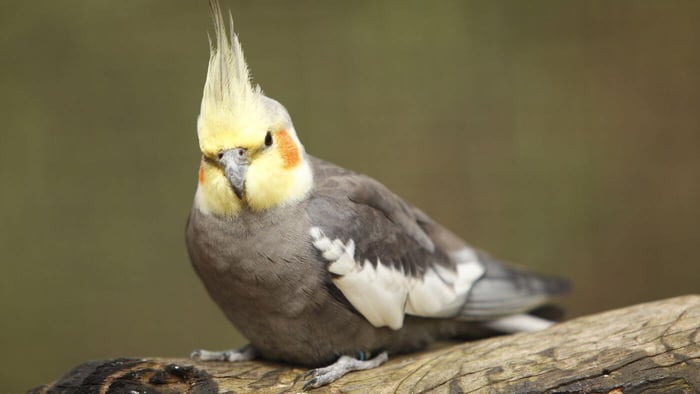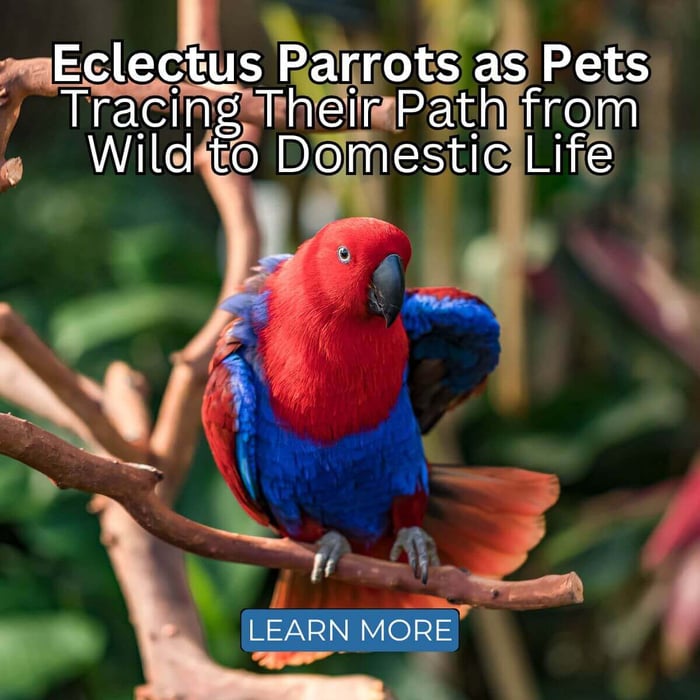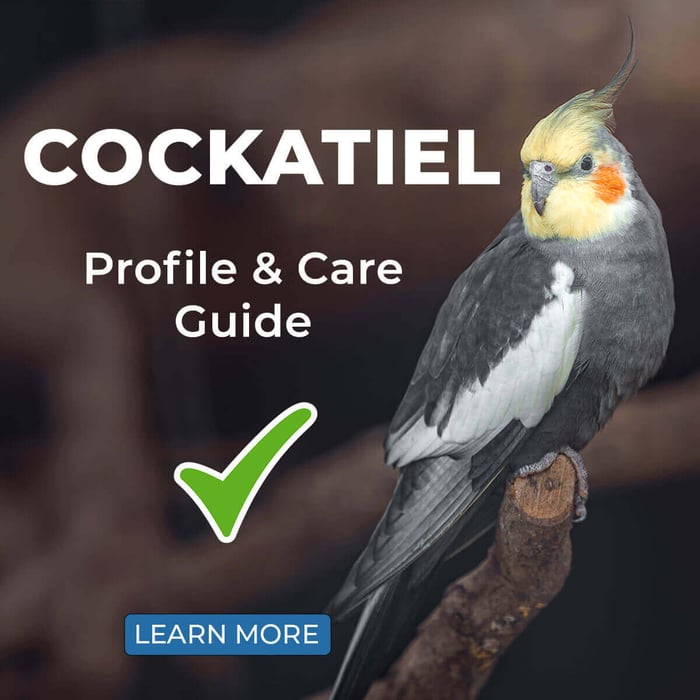Cockatiels as Pets: How Australia’s Wild Birds Became Family Companions
At Parrot Essentials, we're marking 16th May as Cockatiel Day - a chance to shine a light on one of the most loved and recognisable companion birds. With their upright crests, bright orange cheeks and charming whistles, cockatiels as pets have found their way into homes and hearts around the world. But how did it all begin?
The story of cockatiels as pets spans continents, centuries, and a growing appreciation for their intelligence and character. From their roots in Australia's wild interior to their place on perches and shoulders across the UK, cockatiels have earned a lasting place in aviculture and in our homes.
From the Heart of Australia
Cockatiels (Nymphicus hollandicus) are native to Australia's vast and dry inland regions, where they thrive in open woodlands, grasslands and shrublands. These agile, flock-oriented birds are highly adaptable and are often seen flying in groups near waterholes or perched high in eucalyptus trees. They feed on seeds, fruits and vegetation, always alert to danger and constantly on the move.
As the smallest member of the cockatoo family, cockatiels are distinctive in both form and behaviour. The first ever recorded scientific description of the cockatiel was by Scottish naturalist Robert Kerr in 1792, who named it Psittacus hollandicus. The species was later reclassified into its own genus, Nymphicus, in 1832. But it wasn't until European settlement in Australia gained pace that cockatiels began to attract attention beyond the continent.
Export and Early Popularity
In the late 18th and early 19th centuries, explorers and settlers began exporting cockatiels to Europe. These striking birds, with their elegant crests and curious behaviour, quickly captivated avian enthusiasts. By the 1850s, cockatiels were being successfully bred in captivity in France, marking the beginning of their widespread appeal as pets.
Throughout the 19th and early 20th centuries, cockatiels began to appear more frequently in private collections and aviaries. Unlike larger parrots, which could be noisy and demanding, cockatiels were small, charming, and relatively easy to care for. Their friendly temperament and visual appeal made them particularly popular in households looking for a sociable bird without the high-maintenance traits of larger parrot species.
As trade and travel expanded, so did the availability of cockatiels as pets across the UK, Europe, and the United States. By the mid-20th century, they had cemented their reputation as one of the best small parrots for beginners.
Gentle Companions with Personality
What truly sets cockatiels as pets apart is their personality. They are intelligent and curious, but also known for their calm and affectionate disposition. While they can be lively and inquisitive during play, they're equally happy spending time simply perched beside you, watching the world go by.
Cockatiels are excellent at picking up routines and enjoy the predictability of daily interaction. Their expressive crests serve as visual cues to their mood, raised when excited or curious, flattened when relaxed, and slightly lowered when cautious. They communicate in subtle, intelligent ways, which makes bonding with a cockatiel deeply rewarding.
Although not known for extensive talking, cockatiels can mimic household sounds and are talented whistlers. Many cockatiel owners are charmed by their birds' ability to learn simple tunes or mimic the call of the kettle, a phone ring, or even the microwave beep.
Distinct from Other Small Parrots
For those unsure whether a cockatiel is the right bird for them, it helps to compare it with other species. Many people weigh up budgies vs cockatiels when choosing their first bird. This post offers a detailed comparison, but in short, cockatiels tend to be quieter, more mellow, and more physically expressive than budgies.
They also form strong attachments to their humans, often choosing a favourite person and bonding deeply. While this makes them affectionate and engaging companions, it also means they need daily interaction to stay happy and mentally stimulated.
A Beautiful Array of Colour Mutations
The original cockatiel - still commonly referred to as the "normal grey" - features a grey body, white wing flashes, a bright yellow face (in males), and iconic orange cheek patches. However, breeders over the past century have developed a stunning variety of cockatiel mutations, each with unique feather colouring and markings.
Here are some of the most well-known:
- Lutino - One of the most recognised mutations, lutinos are white to pale yellow with bright orange cheeks. They lack melanin, so they have red eyes and no grey colouring.
- Pied - A genetic mutation that produces patchy areas of white or yellow across a grey background. No two pied cockatiels look exactly alike.
- Pearl - This elegant mutation displays scalloped feather markings across the wings and back, often more visible in females. It gives the bird a shimmering, lace-like appearance.
- White-faced - This mutation lacks all yellow and orange pigmentation, creating a striking monochrome look. Males have clear white faces, while females often retain grey tones.
- Cinnamon - Replacing the grey with soft brown tones, cinnamon cockatiels have a warm, subtle appearance that's especially popular among breeders.
- Fallow - A rarer mutation that also replaces grey with a lighter tan, often paired with red or ruby eyes.

Breeders continue to explore and refine these mutations, and combinations are common, such as Lutino Pearls or Cinnamon Pieds, resulting in an ever-growing palette of beautiful variations.
Fun Facts and Lesser-Known Traits
- Cockatiels are monomorphic, meaning males and females often look very similar, though males typically have brighter cheek patches and are more vocal.
- In the wild, cockatiels are nomadic, travelling long distances in search of water and food.
- They can live up to 20 years or more with proper care, though the average lifespan is around 15–18 years.
- Cockatiels are most active during the morning and early evening, often bursting into song or chatter at sunrise and sunset.
- A well-socialised cockatiel may learn to mimic up to 10–15 different sounds or short tunes.
Cockatiels in Culture and Everyday Life
Beyond homes and aviaries, cockatiels have found their way into pop culture, social media, and art. From viral videos of birds dancing to music to handmade illustrations on stationery and accessories, cockatiels are widely adored not just as pets, but as symbols of playfulness and charm.
Perhaps it's because they seem so animated - cocking their heads to sounds, flaring their crests in surprise, or chirping as they preen. They capture our attention in quiet, endearing ways and leave lasting impressions.
A Timeless Companion
From their first journeys aboard ships to 19th-century Europe to their current roles as adored members of the family, cockatiels have always managed to connect with people in meaningful ways. They don't just share our homes, they share our routines, moods, and moments.
Whether you're already a proud cockatiel owner or just beginning to learn more about them, there's no denying that cockatiels as pets offer something special. They're gentle, intelligent, and expressive companions that bring joy not just through their beauty, but through their bond.
To learn more about living with these wonderful birds, explore our blog for insights like the cockatiel care guide or an honest look at the pros and cons.
When it comes to giving your cockatiel the best, Parrot Essentials offers a full range of toys, perches, nutritious food, and accessories tailored to their needs.
FAQs
How long do cockatiels live?
With proper care, cockatiels can live between 15 to 20 years, and some even longer.
Can cockatiels talk?
While they’re not known for clear speech like some parrots, cockatiels can mimic sounds and simple phrases, and are excellent whistlers.
Where do cockatiels come from?
Cockatiels are native to Australia's dry inland regions, where they thrive in open woodlands, grasslands, and shrublands.
How did cockatiels become popular as pets?
Cockatiels were exported to Europe in the late 18th and early 19th centuries. Their gentle temperament and manageable size made them popular among avian enthusiasts, especially by the mid-20th century.
Why do cockatiels have crests, and what do they mean?
Cockatiels use their crests to express emotions — raised when curious or excited, relaxed when calm, and lowered when cautious.




